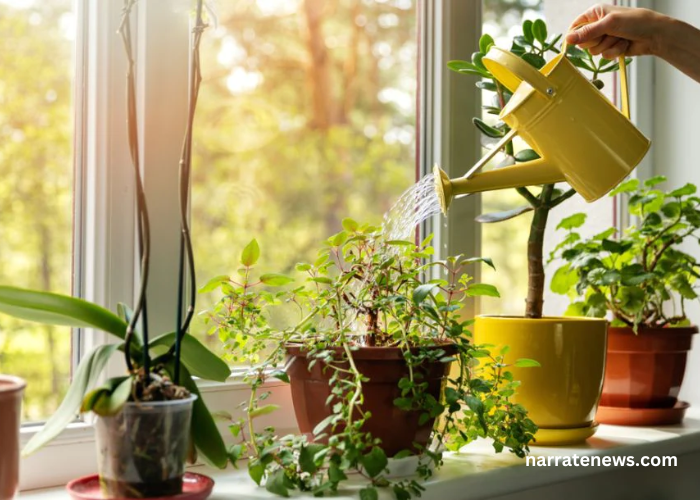
A Comprehensive Guide to Indoor Gardening for Beginners
Indoor gardening offers a rewarding and therapeutic experience for those seeking to bring a touch of nature into their homes. Whether you have a spacious house or a cozy apartment, cultivating plants indoors is an excellent way to connect with nature, improve air quality, and enhance your living space. In this comprehensive guide, we will delve into the essentials of indoor gardening for beginners, covering everything from choosing the right plants and containers to understanding light, soil, and maintenance.
Indoor Gardening for Beginners
Selecting the Right Plants
-
Understanding Light Requirements:
Different plants have varying light requirements. Learn about low-light, medium-light, and high-light plants to match them with your indoor environment.
Assess the natural light conditions in your home and choose plants that thrive in those conditions.
-
Low-Maintenance Starter Plants:
Opt for beginner-friendly plants such as photos, snake plants, or spider plants that are resilient and forgiving to occasional lapses in care.
Consider herbs like basil, mint, or chives for a functional and aromatic indoor garden.
Choosing the Ideal Containers
-
Drainage Considerations:
Ensure that your containers have drainage holes to prevent waterlogging, promoting healthy root development.
Explore various container materials, including ceramic, plastic, or fabric pots, each with its advantages and considerations.
-
Size Matters:
Select containers that accommodate the size of your chosen plants, providing enough space for root growth.
Consider vertical gardening solutions or hanging planters for small spaces.
Understanding Light and Placement
-
Natural Light vs. Artificial Light:
Know the difference between natural light and artificial light sources for indoor plants.
If natural light is limited, supplement with grow lights, ensuring your plants receive adequate light for photosynthesis.
-
Proper Placement:
Place light-loving plants near windows with abundant sunlight.
Rotate plants regularly to ensure all sides receive equal sunlight exposure, promoting balanced growth.
Nurturing Healthy Soil
-
Choosing the Right Soil Mix:
Explore potting mixes tailored to different plant types, such as cacti mix or African violet mix.
Consider adding perlite or vermiculite to enhance drainage and aeration.
-
Fertilizing Indoor Plants:
Understand the nutritional needs of your plants and choose a suitable fertilizer.
Follow a regular fertilizing schedule, but be cautious not to over-fertilize, as it can harm your plants.
Watering Wisdom
-
Establishing a Watering Routine:
Learn to assess your plants’ water needs based on soil moisture, plant type, and environmental conditions.
Overwatering is a common mistake; allow the top inch of soil to dry before watering again.
-
Watering Techniques:
Use a watering can with a narrow spout to control water distribution.
Consider bottom watering for plants sensitive to moisture on their leaves.
Maintaining Indoor Humidity
-
Humidity Preferences:
Understand the humidity preferences of your indoor plants, especially tropical varieties that thrive in higher humidity.
Grouping plants together can create a microclimate with increased humidity.
-
DIY Humidity Solutions:
Employ simple methods to increase humidity, such as placing water-filled trays near plants or misting them occasionally.
Invest in a room humidifier for more controlled humidity levels.
Pest Prevention and Management
-
Identifying Common Pests:
Recognize common indoor pests like spider mites, aphids, and fungus gnats.
Regularly inspect your plants for signs of infestation.
-
Natural Pest Control:
Use natural remedies like neem oil or insecticidal soap to control pests.
Quarantine new plants to prevent introducing pests to your established indoor garden.
Repotting and Pruning
-
Signs Your Plant Needs Repotting:
Monitor your plants for signs of root-bound growth, reduced growth, or declining health.
Repot plants when they outgrow their containers or the soil becomes depleted.
-
Pruning for Health and Aesthetics:
Prune dead or yellowing leaves to encourage new growth.
Shape and train your plants for a more aesthetically pleasing indoor garden.
Creative Indoor Garden Ideas
-
Vertical Gardens:
Explore vertical gardening options to maximize space, such as wall-mounted planters or hanging gardens.
Consider creating a green feature wall with a variety of plants.
-
Terrariums and Miniature Gardens:
Build miniature ecosystems in glass containers or terrariums, incorporating tiny plants, moss, and decorative elements.
Experiment with different themes, from desert landscapes to lush rainforests.
Conclusion:
Embarking on the journey of indoor gardening as a beginner is an exciting and fulfilling endeavor. With the right knowledge and a bit of patience, you can transform your living space into a green haven. From selecting the right plants and containers to mastering light, soil, and maintenance, this comprehensive guide provides the foundation for a successful and enjoyable indoor gardening experience. Embrace the therapeutic benefits of nurturing plants indoors and watch as your green oasis flourishes. Happy gardening!


